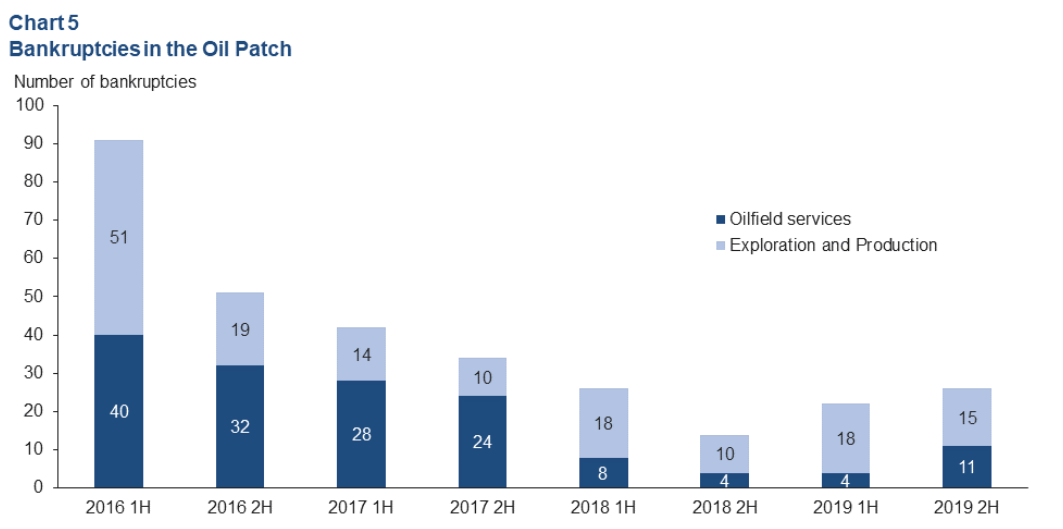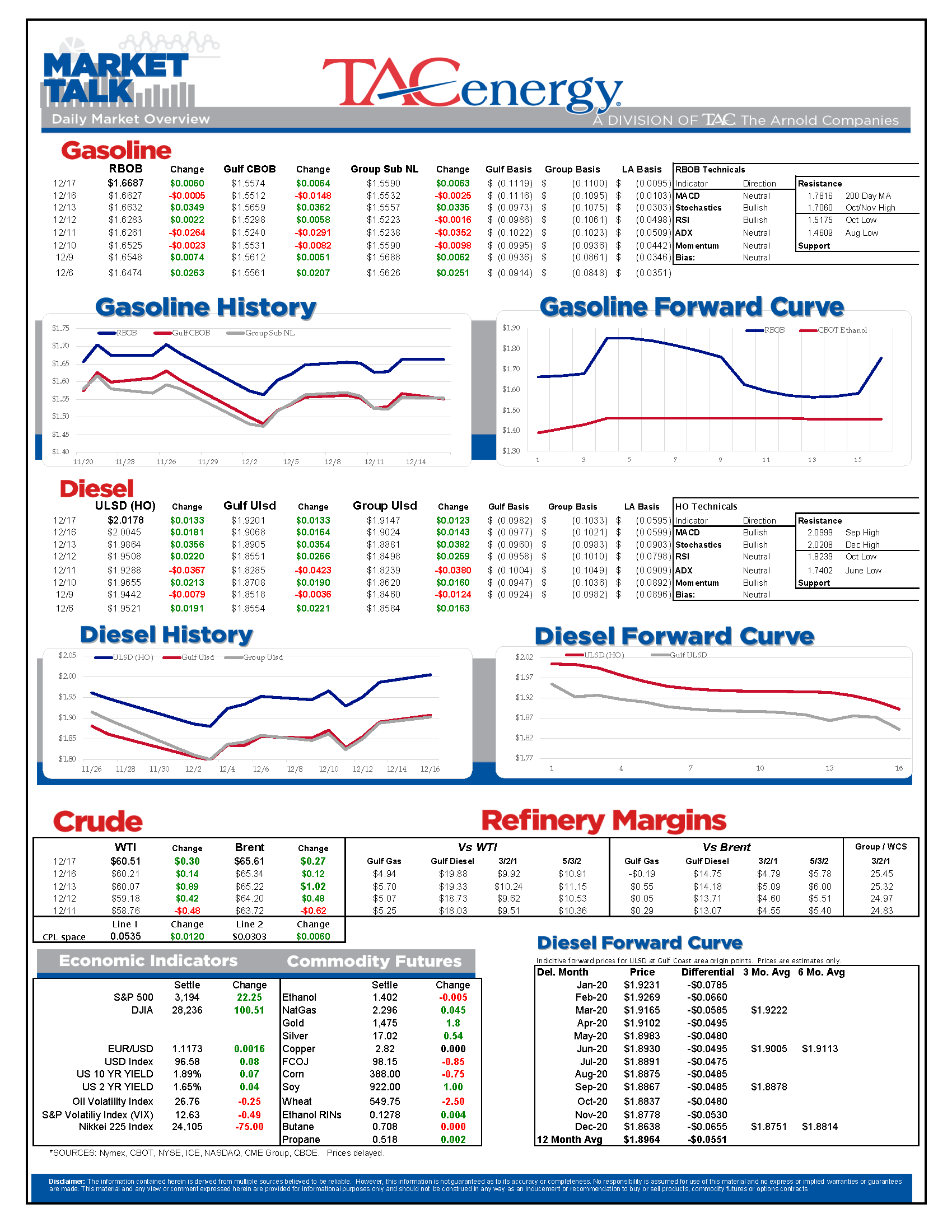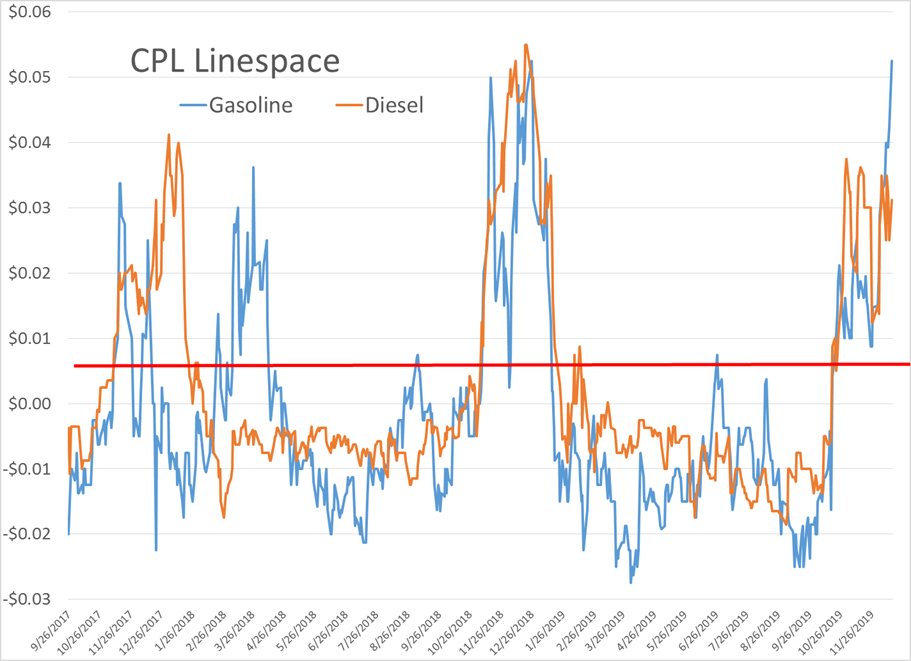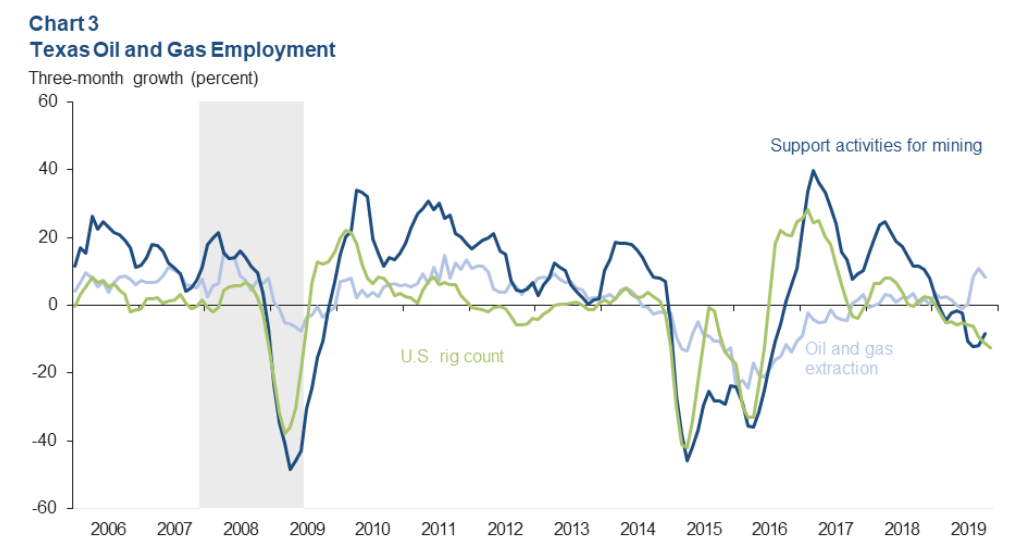Another Green Day For Energy Futures

It’s another green day for energy futures as prices continue to ride the bullish wave of OPEC cuts and the Phase-1 US/China trade deal. The move higher has been fairly small however (it took 2 full weeks to make up for just the Black Friday losses) which could mean traders are skeptical of the staying power of this rally, or simply that they’re focusing elsewhere as the holidays approach.
ULSD futures are starting to look particularly bullish with a trifecta of technical, fundamental and regulatory factors all favoring higher prices near term. If there’s any sort of major winter cold snap along the East Coast in the next few months, conditions are ripe for a 30+ cent price increase in short order. The first test on the charts looks to be the highs around $2.10 that were set in the wake of Iran’s attacks on Saudi oil infrastructure in September.
Gasoline prices are struggling to keep pace with the rest of the complex as we enter the seasonal demand slowdown, with US inventories at elevated levels, compared to distillate stocks that are at the bottom end of their seasonal range.
Values to ship gasoline on the main line of Colonial pipeline’s system rose to their highest levels in more than 3 years Monday as Gulf Coast basis values dropped to double digit discounts to RBOB futures amidst several refineries ramping up gasoline production. The loss of the PES refinery earlier this year along with the Tier 3 gasoline & IMO diesel spec changes for 2020 could make values along Colonial more consistently valuable vs recent years when they’ve spent the majority of their time in negative territory. As the chart below shows however, values for space along the line seem to be following a seasonal pattern, and won’t be a game changer unless they last into the spring.
The giant spending package working its way through congress is reported to include the $1/gallon biodiesel blenders credit retroactively from Jan 1 2018, through the end of 2022. If passed, that may well save numerous US biodiesel producers that were on the verge of insolvency without the credit, and give the industry a rare period of extended certainty after many years of having to wait for the credit to be reinstated retroactively.
The Dallas FED’s energy indicators report for December suggests that the slowdown in oil drilling has cost more than 8,000 job losses in TX this year, more than double the official federal estimate, as bankruptcies in the oil patch rose throughout the year. The report also notes that OPEC may have handed producers an early Christmas present with their output cuts that have propped up prices.
Click here to download a PDF of today's TACenergy Market Talk.
Latest Posts
Week 17 - US DOE Inventory Recap
The Energy Complex Is Trading Modestly Lower So Far This Morning With WTI Crude Oil Futures Leading The Way
Energy Futures Are Drifting Quietly Higher This Morning
Refined Products Holding Close To Break Even While Oil Prices Are Losing Just Under 1%
Social Media
News & Views
View All
Week 17 - US DOE Inventory Recap

The Energy Complex Is Trading Modestly Lower So Far This Morning With WTI Crude Oil Futures Leading The Way
The energy complex is trading modestly lower so far this morning with WTI crude oil futures leading the way, exchanging hands $1.50 per barrel lower (-1.9%) than Tuesday’s settlement price. Gasoline and diesel futures are following suit, dropping .0390 and .0280 per gallon, respectively.
A surprise crude oil build (one that doesn’t include any changes to the SPR) as reported by the American Petroleum Institute late Tuesday is taking credit for the bearish trading seen this morning. The Institute estimated an increase in crude inventories of ~5 million barrels and drop in both refined product stocks of 1.5-2.2 million barrels for the week ending April 26. The Department of Energy’s official report is due out at it’s regular time (9:30 CDT) this morning.
The Senate Budget Committee is scheduled to hold a hearing at 9:00 AM EST this morning regarding a years-long probe into climate change messaging from big oil companies. Following a 3-year investigation, Senate and House Democrats released their final report yesterday alleging major oil companies have internally recognized the impacts of fossil fuels on the climate since as far back as the 1960s, while privately lobbying against climate legislation and publicly presenting a narrative that undermines a connection between the two. Whether this will have a tangible effect on policy or is just the latest announcement in an election-yeardeluge is yet to be seen.
Speaking of deluge, another drone attack was launched against Russian infrastructure earlier this morning, causing an explosion and subsequent fire at Rosneft’s Ryazan refinery. While likely a response to the five killed from Russian missile strikes in Odesa and Kharkiv, Kyiv has yet to officially claim responsibility for the attack that successfully struck state infrastructure just 130 miles from Moscow.
The crude oil bears are on a tear this past week, blowing past WTI’s 5 and 10 day moving averages on Monday and opening below it’s 50-day MA this morning. The $80 level is likely a key resistance level, below which the path is open for the American oil benchmark to drop to the $75 level in short order.
Click here to download a PDF of today's TACenergy Market Talk.

Energy Futures Are Drifting Quietly Higher This Morning
Energy futures are drifting quietly higher this morning as a new round of hostage negotiations between Israel and Hamas seem to show relative promise. It seems the market is focusing on the prospect of cooler heads prevailing, rather than the pervasive rocket/drone exchanges, the latest of which took place over Israel’s northern border.
A warmer-than-expected winter depressed diesel demand and, likewise, distillate refinery margins, which has dropped to its lowest level since the beginning of 2022. The ULSD forward curve has shifted into contango (carry) over the past month as traders seek to store their diesel inventories and hope for a pickup in demand, domestic or otherwise.
The DOE announced it had continued rebuilding it’s Strategic Petroleum Reserve this month, noting the addition of 2.3 million barrels of crude so far in April. Depending on what the private sector reported for last week, Wednesday’s DOE report may put current national crude oil inventories (include those of the SPR) above the year’s previous levels, something we haven’t seen since April of 2022, two months after Ukraine war began.
The latest in the Dangote Refinery Saga: Credit stall-out, rising oil prices, and currency exchange.
Click here to download a PDF of today's TACenergy Market Talk.





